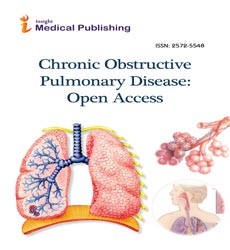A Closure Look on Mechanism of Corticosteroids
Davis miler
Davis miler
Department of Biomedical Sciences, University of Melbourne, Melbourne, Australia
Corresponding author:Davis miler
Department of Biomedical Sciences
University of Melbourne, Melbourne, Australia
E-Mail Id:- begupri@hotmail.com
Received: July 04, 2021, Accepted: July 18, 2021, Published:July 26, 2021
Citation: Miler D (2021) A Closure Look on Mechanism of Corticosteroids. Ann Clin Lab Res. Vol.6 No.4:64
Introduction
Glucocorticoids are primary stress hormones that regulate a variety of physiologic processes and are essential for life. The actions of glucocorticoids are predominantly mediated through the classic glucocorticoid receptor (GR). Glucocorticoid receptors are expressed throughout the body, but there is considerable heterogeneity in glucocorticoid sensitivity and biological responses across tissues. Ligand-activated GR induces or represses the transcription of thousands of genes through direct binding to DNA response elements, physically associating with other transcription factors, or both. The conventional belief that glucocorticoids act through a single GR protein has changed dramatically with the discovery of a diverse collection of receptor isoforms. These GR variants are derived from a single gene by alternative splicing and alternative translation initiation mechanisms. Moreover, posttranslational modifications of these GR isoforms further expand the heterogeneity of glucocorticoid signaling. In this chapter, we provide an overview of the molecular mechanisms that regulate glucocorticoid actions, highlight the dynamic nature of hormone signaling and discuss the molecular properties of the GR isoforms.
Corticosteroids are a class of steroid hormones released by the adrenal cortex, which includes glucocorticoids and mineralocorticoids. However, the term “corticosteroids” is generally used to refer to glucocorticoids. Named for their effect in carbohydrate metabolism, glucocorticoids regulate diverse cellular functions including development, homeostasis, metabolism, cognition and inflammation. Due to their profound immune-modulatory actions, glucocorticoids are one of the most widely prescribed drugs in the world and the worldwide market for glucocorticoids is estimated to be worth more than USD 10 billion per year. Glucocorticoids have become a clinical mainstay for the treatment of numerous inflammatory and autoimmune diseases, such as asthma, allergy, septic shock rheumatoid arthritis, inflammatory bowel disease, and multiple sclerosis. Unfortunately, the therapeutic benefits of glucocorticoids are limited by the adverse side effects that are associated with high dose (used in the treatment of systemic vasculitis and SLE) and long-term use. These side effects include osteoporosis, skin atrophy, diabetes, abdominal obesity, glaucoma, cataracts, avascular necrosis and infection, growth retardation, and hypertension [1].
Glucocorticoids (cortisol in man and corticosterone in rodents) are steroid hormones synthesized and released by the adrenal glands in a circadian manner, in response to physiological cues and stress5 . The circadian profile of glucocorticoid release from the adrenal glands is regulated by the hypothalamic-pituitaryadrenal (HPA) axis. Inputs from the suprachiasmatic nucleus (SCN) stimulate the para-ventricular nucleus (PVN) of the hypothalamus to release corticotrophin-releasing hormone (CRH) and arginine vasopressin (AVP). These hormones act on the anterior pituitary where they activate corticotroph cells to secrete adrenocorticotrophin hormone (ACTH) into the general circulation [2].
Biologically active glucocorticoids are synthesized from cholesterol through a multienzyme process termed steroidogenesis. ACTH increases adrenal gland activity via Protein Kinase A (PKA) activation leading to non-genomic regulation of steroidogenic proteins. This includes phosphorylation of hormone sensitive lipase (HSL), a protein that increases the levels of intracellular cholesterol, and phosphorylation of steroidogenic acute regulatory protein (StAR), which promotes the transport of cholesterol into the mitochondria, where cholesterol is converted into pregnenolone by the enzyme side-chain cleavage cytochrome P450 (P450scc). This process is followed by a number of enzymatic reactions within the mitochondria and the endoplasmic reticulum that ultimately leads to glucocorticoid synthesis within the cells, which, in turn, is released into the general blood circulation.
The physiological and pharmacological functions of glucocorticoids are mediated by the intracellular glucocorticoid receptor (GR), a member of the nuclear receptor family of ligand-activated transcription factors. The GR is a modular protein comprised of three functional domains: an N-terminal transactivation domain (NTD), a central DNA binding domain (DBD) and a C-terminal ligand-binding domain (LBD)12. Two nuclear localization signals are situated within the LBD and at the DBD-hinge region, respectively. The NTD, covering amino acids 1–420 of the GR is east conserved and is thus the most variable domain among all the nuclear receptors. [3].
References
- Van Staa TP, Leufkens HG, Abenhaim L, et al. (2000). Use of oral corticosteroids in the United Kingdom. QJM : monthly journal of the Association of Physicians. 93:105–111.
- Rhen T, Cidlowski JA. (2005) Antiinflammatory action of glucocorticoids –new mechanisms for old drugs. N Engl J Med. 353:1711–1723.
- Schacke H, Docke WD, Asadullah K. (2002) Mechanisms involved in the side effects of glucocorticoids. Pharmacology & therapeutics. 96:23–4.
Open Access Journals
- Aquaculture & Veterinary Science
- Chemistry & Chemical Sciences
- Clinical Sciences
- Engineering
- General Science
- Genetics & Molecular Biology
- Health Care & Nursing
- Immunology & Microbiology
- Materials Science
- Mathematics & Physics
- Medical Sciences
- Neurology & Psychiatry
- Oncology & Cancer Science
- Pharmaceutical Sciences
